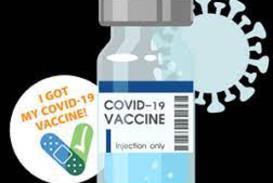Healthcare Medical Pharmaceutical Directory.com
Health Systems - Hospitals
Business Trends...
- Hospitals and health systems see more consolidation in 2021 as they reset their positions due to the clinical and economic chaos of the pandemic to compete while leveraging scale against payers, product manufacturers and GPOs
- Rural hospitals are under medical staffing and cost duress; telemedicine will reduce issues but needs financial investment
- Scroll down to a list of leading hospitals and health systems plus articles about their business challenges and opportunities
Hospital and Health System Market Sector Overview
Health systems (also referred to as "hospital systems", "integrated delivery networks", "IDNs") are undergoing significant changes. Average profit margins (less than 3%) are under great pressure from commercial and government payers and some hospitals have negative operating margins. As the U.S. population ages, more citizens become eligible for Medicare. As they get older, they require more of the care provided by hospitals. As this trend progresses, hospitals are earning less although the services they are providing are more complex and costly because Medicare reimbursement is low. 2021 will be another challenging year to provide care and control costs as the pandemic triggers peaks and troughs in patient care needs, staffing demands and expenses.
A tight labor market and demand for qualified healthcare professionals (exacerbated by the pandemic) contributes to increased operating expenses for hospitals and health systems going into 2021. Larger health systems that have a commanding share within certain metropolitan markets enjoy healthier margins but still must deal with reduced reimbursement and increased cost averages. There are about 6,200 hospitals in the United States which includes approximately 200 government hospitals and 600 psychiatric hospitals. All U.S. hospitals combined have a capacity of about 920,000 staffed beds.
Medical And Business Model Transformation For Hospitals And Health Systems
Hospitals and health systems have developed commercial, clinical and operational strategies to cope with the challenge of providing better care at cost. 25 years ago, about 70% of hospital revenue was generated by in-patient care; now it is just over half at 52% as patient care advances enable procedures and other services to be completed quickly on an out-patient basis. They are continually driving to improve patient care and competitive position to better engage healthcare reform despite more stringent reimbursement guidelines by managed care and government payers:
- Acquiring medical groups, specialty practices, surgery centers
- Marketing their own health plans and developing value based care programs
- Acquiring additional hospitals or merging with other healthcare systems
- Developing or buying patient care venues like home infusion, assisted living, long term care businesses
- Fortifying billing and reimbursement data processes to improve accuracy and accelerate payment cycles
- Investing in advanced surgical and other procedural care technology to provide higher levels of advanced care
- Developing population health initiatives driven by data insights to focus on higher risk patients and apply preventative support measures proven to be care and cost effective
Rural hospitals in the United States are experiencing significant issues
More than 170 rural hospitals have closed in the last 15 years and this includes more than 30 critical access hospitals. There are numerous reasons for this dangerous trend including:
- Reduced reimbursement from commercial and government (Medicaid, Medicare, etc.) payers
- Increased operating costs
- A national shortage of nurses, doctors and other credentialed clinicians
- Less overnight stays due to increases in outpatient procedures made possible by new technology
- Flat or falling numbers of residents in certain rural communities
The average rural hospital is located in a community of 60,000 people. When one of them closes, it means those residents are without access to the emergency care provided by a typical rural hospital. On average, the nearest closest rural hospital is about 20 miles away which creates extraordinarily hazardous challenges for patient care during these and other medical events:
- Burn victims
- Cardiac emergencies
- Childbirth
- Head and spinal injuries
- Infant and adolescent medical emergencies
- Respiratory care (allergy/asthma, smoke inhalation)
- Trauma (auto, motorcycle, construction, farm equipment accidents plus business and home mishaps)
Benefit and Burden of Healthcare Data
Advances in technology generate new options for health systems to improve patient care. They include larger scale EHR / EMR platforms, advanced robotic surgery apparatus and medication management systems. The data that is generated by digital healthcare technology can provide insights that drive the development of precision medicine and population health initiatives. Remote patient monitoring with telehealth or telemedicine applications extends their continuum of care beyond their facilities and campuses.
Technology innovation presents challenges as well. Clinicians are spending more time on intricate charting and reporting activities as they input patient data. While the data is necessary for care and reimbursement purposes, its sheer volume in terms of analytics and data entry demand is almost overwhelming. Health system budgets are already tight; new technology is costly and once it is in place still requires maintenance and upgrades which is an added expense. Data errors or other technology issues can also be a liability issue.
Health System Consolidation Via Mergers and Acquisitions
Several key strategies are emerging in the health system sector. Mergers between hospitals and health systems are more frequent than ever before but also trigger concern by consumers / patients and regulators in terms of reduction in provider competition. Merger and acquisition strategies are also applied by health systems buying established physician group practices, clinics and specialty treatment centers (outpatient surgery, physical therapy, infusion sites, etc.) in addition to organically developing more point-of-care sites ).
Another approach is for the merger and acquisition strategy to expand across state and regional borders; multiple hospitals in several metropolitan areas and states are operated by a single ownership entity. This steers them clear of marketplace anti-competitive scrutiny by regulators. Key examples of this are HCA and Tenet --plus Steward Healthcare is a new contender with an added variable as it is a private equity venture under Cerebus.
The consolidation strategy aligns with goals to improve care, reduce administrative redundancy, increase leverage against payers and healthcare product manufacturers. Organic and acquisition-based expansion of care services enables them to extend their reach in the continuum of care and increase the likelihood of retaining a greater number and variety of patients. The integration process is arduous as it has varying degrees of impact on patient care, staff, billing, EHR / EMR systems, vendor contracts, supply chain and logistics workflows, IT resources and other areas. Consumers and patients do benefit from their healthcare provider organization having the ability to provide a wider array of care and reduce the chances of them being inconvenienced by having to search outside of their primary care provider's network for more specialized medical attention.
Long Term Acute Care Hospitals
Long Term Acute Care hospitals, known as "LTACS", are a highly specialized segment. They bridge the gap between hospitals and adjoining healthcare service providers such as rehabilitative care and/or nursing facilities. Patients are typically transferred to an LTAC from the intensive care unit of a traditional hospital because they no longer require advanced procedures, diagnostic services or the other deep resources offered by a full scale hospital facility but still require advanced levels of care.
LTACs focus on patients with serious medical issues requiring intense, special treatment for an extended period of time, perhaps 20 to 30 days. LTACs offer more individualized support than a skilled nursing facility, nursing home or acute rehabilitation facility. Depending on the patient, after completing the care regimen at an LTAC, they may be discharged to go home or transferred to a rehabilitative facility to complete their recovery. In other cases, patient stays in LTACs are extended based on recovery status and required care.
Some hospital/healthcare systems provide LTAC services by operating their own LTAC facilities. There are also several sizable, well-established companies dedicated to the extended care market which operate a number of LTACs as well as rehabilitative centers and other extended care service facilities. Some of the leaders are :
- Kindred
- Landmark Hospitals
- SelectMedical
- Vibra
*Kindred has begun to exit the LTAC sector by selling some of its LTAC facilities to better focus on other portions of its business...
Moving Forward
As the trend of hospital and health system mergers and acquisitions continues in 2021 and beyond, their business strategy and the vendors which do business with them continually evolves. Losing one health system account can have a significant impact on a pharmaceutical or medical device manufacturer, GPO or other types of vendors in a metropolitan, regional or national scale. As each health system entity grows, the fragmentation within the marketplace is reduced so there are even less opportunities to fill revenue gaps if an account is lost.
The consolidation trend impacts downstream healthcare provider organizations as well. As hospitals and health systems acquire physician practice groups, specialty clinics and other providers, it centralizes more revenue within one organization for healthcare provider vendors to manage and strategically negotiate for. It is also a competitive concern for the remaining independent clinics and practices competing against them. Rural hospitals and medical group practices, already challenged with increased operating costs and reduce reimbursement levels, do not always have the option to be acquired by or merge with a larger health system and are sometimes forced to close which creates significant access to care for the communities they support.
Product Manufacturers and Service Companies Challenged by Hospital and Health System Consolidation
As health systems grow, medical device, diagnostic instrumentation, medical equipment and pharmaceutical manufacturers and other suppliers or vendors allocate greater market access strategy priority to them. Their growing market dominance is something that is also leveraged against managed care organizations, health insurance companies and GPOs. Companies doing business with them must scale up accordingly to manage larger financial considerations and the widening needs of larger health system customer accounts.
Larger accounts will not only command a greater level of attention, their material needs are multiplied. When placing orders with manufacturers or supply chain vendors, product must be available within a reasonable or specified deadline timeframe. Backorders and other failure to supply issues can lead to contract guarantee penalties and more stringent measures such as breach of contract implications which could terminate business between the source entity and the hospital / health system customer.
Health System Account Retention Strategies Equal New Business Priorities To Maintain Revenue Streams
It equally demands the development of precise, long term contracting strategies and customer retention measures that perform at a high level to minimize any advantages or opportunities for competitors to make inroads. Even small infiltration of an account can be enough of a toe hold for a "non-preferred" or non-contracted company to leverage itself before a contract renewal cycle is approached. Effectively managing rebates, discounts and other customer loyalty provisions keeps hospitals and health systems aligned with GPO and other supplier contracts or loyalty programs and prevents competitors winning business from the outside.
Competition Between Hospitals, Health Systems And Specialty Providers Like Surgery Centers
Each hospital and health system has its own formula for success in effectively reaching out to consumers, patients and other stakeholders in the metropolitan, suburban, regional and national areas they support. Depending on their marketplace, they may be competing against rival health systems and / or specialized medical care provider entities such as surgery centers / ambulatory care centers, large scale medical practice groups and urgent care centers. Hospitals and health systems need to establish their organization and its services as a brand with multiple features (various medical specialties, innovative patient care programs, multiple locations, etc.) and benefits (proven clinical expertise to improve care and healthy patient outcomes, acceptance of a variety of insurance plans, positive JCAHO, Press Ganey and other positive ratings, etc.).
Pivotal Advertising And Marketing Elements For Hospitals And Health Systems To Account For
- Have a well-fortified website equipped with convenient user experience attributes and precise navigation that enables consumers / patients to quickly access information they seek which is current and accurate
- While digital is a leading marketing asset, do not neglect print options as in brochures, pamphlets and strategic print advertising in local publications which are proven performers --and monitor what the competition is doing with print as well
- Capitalize on positive patient evaluation scores and other positive quality feedback by sharing the details through internal / external communication venues
- Healthcare is universal and multicultural; account for this in depictions of patients, clinicians and other elements to identify with the personas and patient populations specific facilities care for
- As new services are added or improvements made to existing services, facilities or other organizational features, share this information through internal / external communication venues
- Take advantage of seasonal events ( flu, frostbite, allergy, heat exhaustion, etc. ) that impact your organization and the population it serves
- Consistently collaborate with medical specialties and departments within the organization to attract patients and effectively compete against other healthcare provider organizations in your proximity
- Access to care is critical; be certain marketing initiatives are centered on areas where patients can reach your point-of-care sites to optimize marketing spend ROI; if your organization has multiple point-of-care options, communicate this as a way to network your organization across numerous communities
- Visibility in the areas where patients live or work is essential through conventional advertising, public relations, employer engagement, school and community events plus other options
- Balance messaging and promotional strategy to champion specific areas of advanced care your organization provides ( cardiology, oncology, etc. ) but avoid neglecting overall care offerings your organization provides to wider or narrower patient populations
... Health Systems, Hospitals and Integrated Delivery Networks (IDNs) are profiled in this section; scroll down for articles and presentations plus a list of the largest health systems and hospital organizations in the United States ...
... Health Systems are a complex sector with increasingly diverse responsibilities; read about their business developments, medical breakthroughs and clinical challenges...
... EVALI challenges healthcare providers and regulators as more cases emerge ...
... Read how Amazon ( Amazon Cloud, Amazon Web Services, Amazon Care ) innovation is optimizing healthcare data and technology applications for healthcare providers, consumers and patients ...
... Find out how changes in medical school enrollment signal new trends for physician ranks of the future...
... A list of leading health systems and hospitals in the United States ...
... See how hospitals and health systems are changing marketing strategies...
...A healthcare industry business intelligence resource with marketing strategy insights for pharmaceutical and medical device manufacturers, healthcare provider organizations, medical software and technology enterprises, patient care service companies and management consulting firms spanning a global community of users from 50+ nations...
... Learn how rural hospital closures are putting millions of Americans at significant risk due to less access to care...


